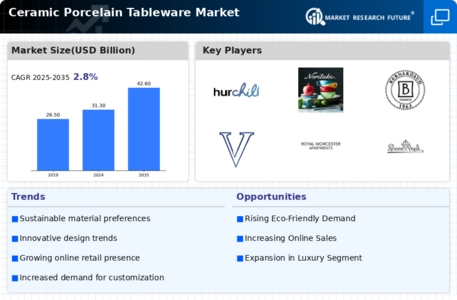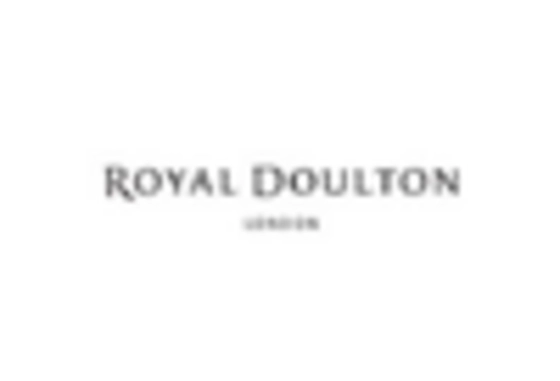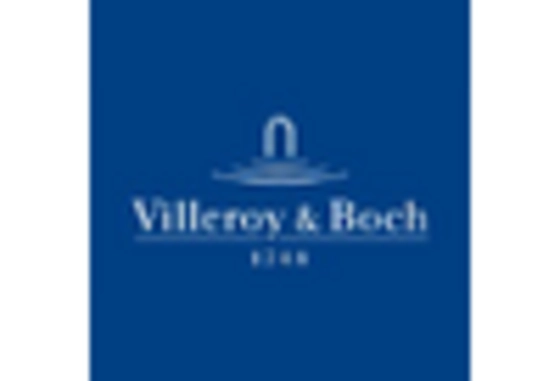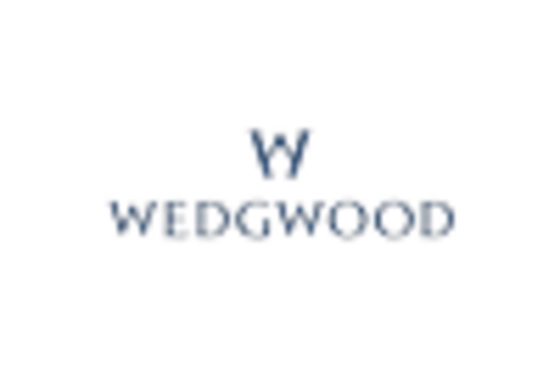The Ceramic Porcelain Tableware Market is currently characterized by a dynamic competitive landscape, driven by innovation, sustainability, and evolving consumer preferences. Key players such as Royal Doulton (GB), Wedgwood (GB), and Villeroy & Boch (DE) are strategically positioning themselves to capitalize on these trends. Royal Doulton (GB) has focused on enhancing its product lines with contemporary designs that appeal to younger demographics, while Wedgwood (GB) emphasizes heritage and craftsmanship, appealing to consumers seeking authenticity. Villeroy & Boch (DE) has adopted a dual strategy of expanding its global footprint while investing in digital transformation to enhance customer engagement. Collectively, these strategies contribute to a competitive environment that is increasingly centered around brand differentiation and consumer experience.
In terms of business tactics, companies are increasingly localizing manufacturing to reduce lead times and enhance supply chain resilience. This approach is particularly relevant in a moderately fragmented market where smaller players also seek to carve out niche segments. The collective influence of major players, however, remains significant, as they leverage economies of scale and brand loyalty to maintain competitive advantages. The market structure is evolving, with larger companies potentially acquiring smaller, innovative brands to diversify their offerings and enhance market share.
In August 2025, Royal Doulton (GB) launched a new line of eco-friendly tableware, utilizing sustainable materials and production methods. This initiative not only aligns with the growing consumer demand for environmentally responsible products but also positions the brand as a leader in sustainability within the ceramic porcelain sector. The strategic importance of this move lies in its potential to attract environmentally conscious consumers, thereby expanding the brand's market reach.
In September 2025, Villeroy & Boch (DE) announced a partnership with a leading e-commerce platform to enhance its online sales capabilities. This collaboration aims to streamline the purchasing process and improve customer accessibility to their products. The strategic significance of this partnership is underscored by the increasing shift towards online shopping, particularly in the home goods sector, suggesting that Villeroy & Boch is keen to adapt to changing consumer behaviors and preferences.
In July 2025, Wedgwood (GB) unveiled a new collection inspired by global travel, which aims to resonate with consumers' desire for unique and culturally rich experiences. This strategic move not only diversifies their product offerings but also taps into the growing trend of experiential consumption. By aligning their products with consumer aspirations for travel and exploration, Wedgwood (GB) enhances its brand narrative and strengthens customer loyalty.
As of October 2025, the competitive trends in the Ceramic Porcelain Tableware Market are increasingly defined by digitalization, sustainability, and the integration of advanced technologies. Strategic alliances are becoming more prevalent, as companies recognize the need to collaborate to enhance innovation and market reach. Looking ahead, competitive differentiation is likely to evolve from traditional price-based competition towards a focus on innovation, technological advancements, and supply chain reliability. This shift indicates a broader transformation in the market, where companies that prioritize these elements may gain a substantial competitive edge.


















Leave a Comment